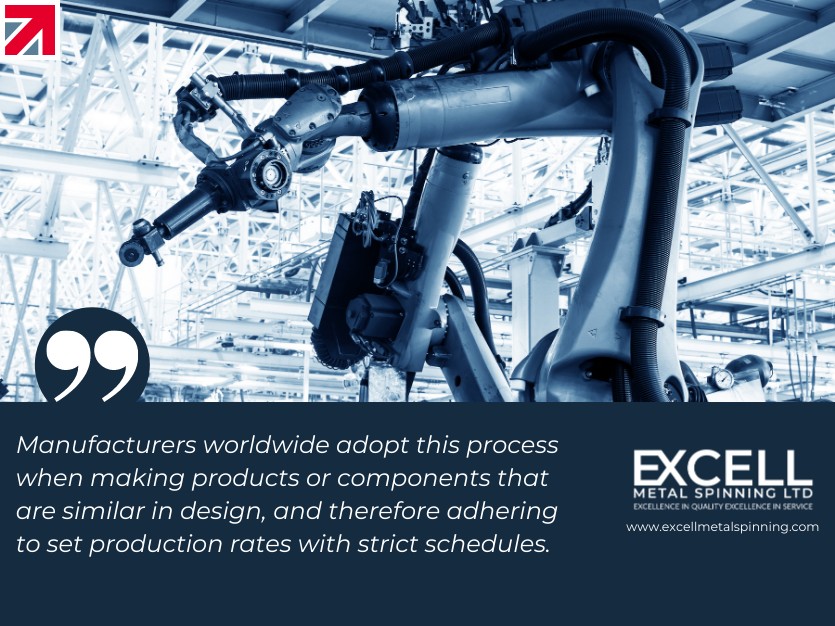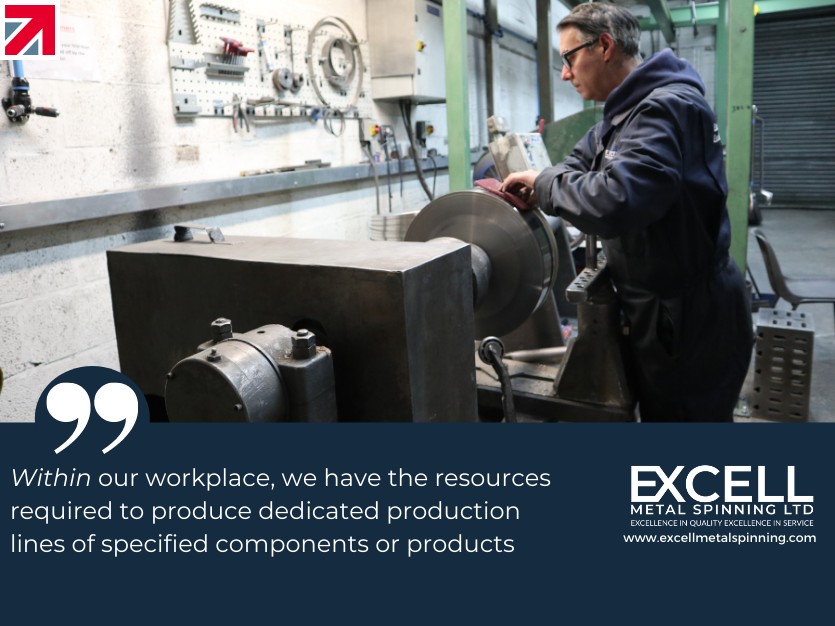Curtis Bligh from Made in Britain member Excell Metal Spinning takes a closer look at repetitive manufacturing
THE repetitive manufacturing process forms one of the six different variations of manufacturing processes that have been adopted by organisations worldwide (to find out more about what the six manufacturing processes are, read my previous article here). It distinguishes itself from other manufacturing processes by utilising production lines that operate 24/7.
Manufacturers worldwide adopt this process when making products or components that are similar in design, and therefore adhering to set production rates with strict schedules. (The production rates are determined by the business’s daily, weekly or monthly targets).
There are, of course, many benefits to utilising this process that we will explore a little further on, but an example is lead times. Lead times are shortened when producing the same product or component over long periods of time because the initial set up time is shortened. Let’s take a look at an example.
Example of the repetitive manufacturing process
Within our workplace, we have the resources required to produce dedicated production lines of specified components or products. For example, the manufacture of lampshades.
Step 1 – The design
The first initial step of production is to finalise the design. This would involve liaising with the customer to determine the specifications of the product’s design and look i.e. dimension, material etc.
Step 2 – Raw materials
The second step is sourcing and purchasing raw materials. Within our facilities, this would be in the form of sheet metal, carefully sourced with quality in mind and as local as possible to minimise our carbon footprint.
Step 3 – Guillotine and circle cutting
The metal spinning process, in short, requires 'blanks' that are produced from the raw materials that have been purchased. The blanks are cut and shaped by the Guillotine and Circle Cutting machinery we have in place within our factory.
Step 4 – Metal spinning
The blanks are mounted on the CNC metal spinning lathe which is programmed to form the blanks into the desired lampshade design given to us from the customer. Take a look at our lampshade case study to see an example of our work by clicking here.
The Repetitive manufacturing process means the lampshades move uninterruptedly from one step to the next. If additional work is required, i.e. paint, this will turn the process into a discrete manufacturing process which we will explore in the next series.
The advantages of the repetitive manufacturing process
- Cost efficiency - This process reduces costs to produce products or components.
- Resources are freed up – Based on the nature of the repetitive manufacturing process, time is solely spent on the manufacture of the products. The role of the operator in this instance is to maintain machinery
- Low skill level requirement – With machinery in use taking over complicated tasks, the level point of entry for new employees may potentially fall. This can be advantageous in acquiring a large pool of potential candidates, and often a cheaper workforce.
- It is important to note, however, that workers rights, pay etc. are strictly upheld within Excell and many UK manufacturers. Unfortunately, this has not been the case by several manufacturers around the world.
- Scheduling made easier – With the production rate set, scheduling is made easier and simpler for the company in question.
- Production speeds are defined – The desired output can be achieved by adjusting the production speed.
- Performance visibility – The manufacturing process can be monitored from one location from start to finish.
The disadvantages of the repetitive manufacturing process
- Tear downs – If there is a fault within the production line, or if the item is adjusted or changed, the production line would require a reassembly. This would have a significant impact on the costs for the manufacturer
- Less customisation – customers have little chance to customise and personalise their orders given the nature of the repetitive manufacturing process
- Low skill level – Although a low skill level can be advantageous, it can also be equally disadvantageous. This is because the process itself is monotonous and boring, and repeated work can lead to employees becoming uninspired and lead to a high labour turnover.
- Customer demand – There is a risk of not meeting customer demand or instead, overestimating customer. This is because demand is constantly changing, often impacted by external factors not controlled by the manufacturer.
Are there more advantages and disadvantages you feel we missed? Tell us your thoughts on social media.
Find out more about Excell Metal Spinning Ltd on their member profile page here.
Find out more about Excell Metal Spinning Ltd on their member profile page here
Member-created content 5 years ago | From members


